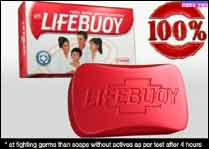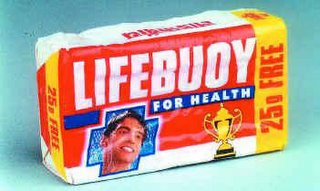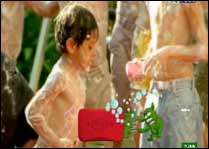Brand portfolio decisions are strategic in nature. These decisions have very powerful impact on the entire brand architecture and marketing strategy of the firm. According to marketing theory, there are two basic brand portfolio models –House of Brands and Branded House.
Recently Rajiv Bajaj, CEO of Bajaj Auto announced a decision that the company will not be using the corporate brand Bajaj for any of the motorcycles produced by the company. Instead, the bikes will sport individual brand names and Bajaj Auto will be a garage of independent brands like Unilever and P&G. According to newspaper reports, the company will focus on four brands – Pulsar, Boxer, Discover and KTM and will not use the parent brand to endorse these individual brands. Bajaj Auto has made the decision to move from a Branded House portfolio model to House of Brands portfolio model.
House of Brands
House of Brands model refers to a brand portfolio where firms will choose different brand names for various products across categories. These brands will have own identity and personality. Different products in the same category will also have individual brand names. FMCG giants like Hindustan Unilever, P&G l follow the model of House of Brands. For example HUL has soap brands like Lux, Rexona, Hamam, Lifebuoy, Dove etc.
House of Brands portfolio model have many advantages. One of the biggest advantages is the focus that managers can give to individual brands. Since each brand will have separate identity, brand managers can devise focused strategies with regard to segmentation, positioning etc. Individual brands also give tremendous amount of freedom as far as strategies are concerned. Brand managers are not constrained in devising their strategies since the brand is not linked to any other brands in the portfolio.
Since the brands in the portfolio are independent, the failure of any one brand is not going to have an impact on other brands. Controversies affecting one brand will have minimal impact on other brands from the same company and brand managers can distance other brands from the brand which is facing the issue.
House of Brands model also have its fair share of disadvantages. Since the firm intent to have different brand names for various products, the cost of promotion of these multiple brands will be more compared to Branded House model.
In the case of House of Brands, the promotional budget has to be shared which will create internal competition among various brands for a larger share. While internal competition can be beneficial, there is also a chance of internal conflicts within the brand management teams.
Another potential disadvantage is the chances of brand cannibalization within a category. For example soap brands Rexona and Hamam from HUL compete with each other in some southern markets. Thums Up and Coca Cola compete with each other in markets where they co-exist.
If not done carefully, different brands in the portfolio can also create confusion in terms of positioning and segmentation. Overlaps in segments, cannibalization, same positioning, and clutter etc can occur if the firm is not careful about the individual brand strategy. At one point of time HLL (now HUL) found its brand portfolio with too many brands that overlapped with each other. The company had to undertake a brand rationalization exercise which reduced the number of brands from 110 to 30 power brands.
Branded House
Branded House portfolio model is where the firm chooses to have one brand name for all the products that is marketed by the company. Many firms use the corporate brand name for all the products that they sell in the market. Dell is often cited as a classic example of a Branded House.
The biggest advantage of Branded House is the economies of scale in terms of brand promotion activities. Since there is only one brand to promote, the firm can channel the entire resources more effectively.
Another advantage of Branded House is that the promotional cost of introducing new products into the market will be significantly lower compared to House of Brands. Since the new product will carry the common brand name, there is an increased chance of consumer acceptance because of the existing brand equity of the parent brand. The firm is thus spared of the task of building brand awareness from the scratch.
A major disadvantage of Branded House model is the possibility of brand dilution arising out of different products from the same brand. Unless carefully monitored, product proliferation within the brand portfolio can dilute the core positioning of the parent brand. It may not be possible for all products to have the same positioning theme and any deviation from parent brand’s positioning will dilute the core positioning them of the Branded House.
Firms strictly adhering to Branded House portfolio model may have to forego many market opportunities if those categories do not fit into the parent brand’s positioning. For example a Branded House marketing luxury product may have to forego the mass market opportunities because of the positioning constraints. That constraint is not applicable for House of Brands because the positioning of one brand may not affect another.
Another disadvantage of Branded House portfolio is the impact of product failures/controversies on entire portfolio. Since all products carry the same brand name, failure of one product can have a negative impact on the parent brand. Any controversy involving a single product can have devastating influence on the entire product range.
Although theoretically these two portfolio models exist, in practice firms tend to use various elements of both models together while devising their brand portfolio strategy.
(Reference: Tybout, A., & Calkins, T. (2006). Brand Portfolio Strategy. In Kellogg on Branding (pp. 104-129). Wiley India.)
Originally Published here at Adclubbombay.com

 The soap was brick red and carbolic ingredient with a unique smell (chryselic perfume) that distinguished itself from other feminine brands and making it the largest selling soap brand in the world
The soap was brick red and carbolic ingredient with a unique smell (chryselic perfume) that distinguished itself from other feminine brands and making it the largest selling soap brand in the world



